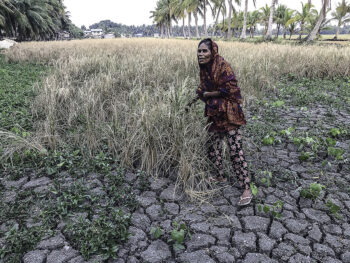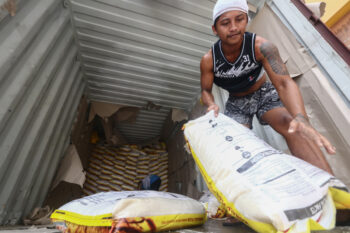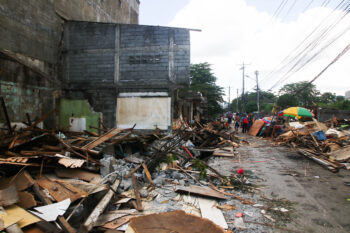
REVIEW
PROCLIVITIES – A Collection of Stories
Karlo Galay David
Aletheia Publications, 2022
DAVAO CITY (MindaNews / 4 August) — First, there was the assertion of Ricardo M. De Ungria, whose latest book – Songs Sprang from Native Souls: More Conversations with Eight Mindanao Writers (Xavier University Press, 2021) – just won as Best Book of Literary History in English at the National Book Awards, announced last July 30, 2022.
In an Introductory essay to this anthology of essays, De Ungria posits that “before any changes towards decoloniality… could be effected, I think more studies and theories on the traditional literatures of the regions should be done first to establish the verbal grounds from which they could be evolved and which would then offer an alternative to the present colonial way of handling, or mishandling, our creative literatures in the regions.”
He consequently champions the need to debunk what used to be taken for granted as being considered “Philippine literature,” namely the works of “self-assured users of English and Filipino in Manila” who thought that what they were doing and writing would be labeled as Philippine or national, to the exclusion of those who were from the regions. He then expressed his hope that “given the many forms and structures of injustice in the present political, economic and cultural administration, the writers in the different regions that comprise the ‘margins’ in the center-margin discourse would reject and dissolve such a framework (of exclusion) and instead look inward into themselves as centers of cultural production developing their own cultural programs, means and aims of production.”
Now comes Karlo Galay David’s Proclivities, A Collection of Stories. In an essay that serves as Introduction to the nine stories in this anthology, David attempts at theorizing to explain the rise and the unfolding of a Mindanawon literature. He refers to an “emerging Mindanawon critical theory of Pakig-Iniya (more specifically its prerequisite ‘pag-iniya’),” a concept which he has coined and tried to develop with other Mindanawon thinkers. After reading these nine stories, the reader can decide if, indeed, one such theory has arisen in the circles of Mindanao’s literary practitioners like David.
In this Introductory essay, David writes: “In their localized specificity, these stories also form part of my project to forge a distinct and conscious identity for the Mindanao Settler, that colono-genetic section of Mindanao’s population which lives bajo de la campana, under the church bells of the Christianized colonial Philippine nation-state that encroaches into Mindanao. These are works of Mindanao Settler fiction, written by a Settler from a Settler perspective, and confronting with candor the complexities of Settlerhood, which in the diverse histories of Mindanao also takes on a multitude of idiosyncratic forms.”
A number of elements captured by all the stories show the realities of Mindanao in all its complexities and the intersecting identities of its multi-ethnic, multi-linguistic, multi-religious inhabitants. In Condign Restitutions, there is even a reference to an indigenous community imagined as existing before they became extinct, namely the F’ilil with its own distinct language.
While the book’s central location is the Greater Kidapawan area – lying between two vast regions of Davao and Cotabato, the stories’ locale traverse across mountain ranges from South Cotabato to Davao Oriental and beyond. Mati in Davao Oriental is where the narrator of The Summoner of Sorrows locates one incident in the past that would haunt him in a latter part of his life. And in The Tenor of His Illusions, the reader is brought by the narrator to Singapore.
Written into the texts are references of Kidapawan’s districts and barangays, flora and fauna (especially its agricultural products, chiefly rubber and its tropical fruits), its various cuisine, its highways and byways. Names of institutions (schools, churches, business firms, etc.) are named, so are some of the old, prominent families. Kidapaweňos reading this book can certainly locate themselves within the book’s texts and find the description of places, people and events familiar either as part of memories of the past or realities of the present.
Considering Kidapawan’s historical background and cultural legacies – involving the interfacing relationships of this territory’s inhabitants, namely the Maguindanaons and Manovu and the entry of migrant settlers from the late Spanish era to the contemporary period, the stories involve characters who have imbibed many of the habits of the population in this particular milieu. How economic, social and symbolic capitals intersect – following the Bourdieusian reference to what are at stake in such a habitat – these would impact identity politics whether in matters of the class divide, genders and sexualities as well as religious and other institutional affiliations.
The stories’ narrators are naturally all settlers, but they are as varied as their points of origin which are mainly from the Visayas but also from the north. One narrator refers to a major character who is a mestizo, being a descendant of a Spanish friar and an indigenous woman.
Given the author’s optics, the lens through which the stories are told is very much from a middle-class perspective manifesting a lot of concerns of the petty bourgeoisie of a small city. His taste in music, cuisine, films, books, entertainment – and yes theories – are un-mistakenly that of the peti burgis.
Most of the characters reflect the reality of the author as a young boy growing up in a middle-class household, finishing basic education and college in exclusive Catholic schools, doing graduate studies in elite Manila schools, employed as professor and doing a lot of research to produce papers for journals and other publications. Careers and jobs ranged from being teacher to government employee, historian to anthropologist. They would typically belong to a locality’s culturati and literati and would name-drop a long list of mostly foreign cultural figures such as the Italian Pasolini, the German novelist Orwell (Animal Farm), the Japanese music of Ryuunosuke Akutagawa, Yukio Mishima, and Haruki Murakami and the Brazilian Sergio Mendez. While there are ordinary folks who also appear in the stories, nonetheless the narrators’ lens are those of a typical peti burgis.
Which accounts for the lingua franca used by the author for his written texts, given the multilingual reality of Mindanao where such a language arises “to facilitate inter-ethnic and inter-regional communication, which can sometimes be referred to as pidgins.” For practically all of the nine stories, except Kuyaw, the language used is a mix of English, Filipino and Cebuano-Bisaya. How to call such a hybrid language? EngTagBis?
When the author makes the character speak, the lines are mostly combinations of Tagalog and Cebuano-Bisaya phrases and words. How to label this? Tag-Bis or Bis-Tag? Is this the Mindanao Tagalog? Or the Mindanao-Bisaya? There would be those who would now refer to it as the Mindanawon lingua franca. Would Mindanao’s linguistics study classify this as a nascent language? Could one Filipino linguist be right when he claimed that this is the kind of language which should be our national language since it combines the lexicon of the country’s two major languages? These are but questions at the moment but it will take time perhaps to find the answers and by then an official orthography of such a language may already be agreed on.
David explains his use of this language: “Language plays a key role in this, with most of the stories using dialogue as close to the language of the locale as possible (my first ever attempt at such a multilingual approach, This localization of language takes on a particular culmination in the last story, Kuyaw, which is written entirely in Davao Tagalog.” There are sections that are written in fluent English revealing the author’s rich command of the English language. For the high school reader, however, a dictionary may prove useful as the vocabulary can veer towards words hardly used in our everyday communications even for those who are Ingleseros.
An attempt at theorizing involves standing on shoulders of those who are pioneers of this particular epistemological field. In David’s case, it would be Gayatri Chakravorty Spivak and Homi K. Bhabha whose subaltern and third space theories, respectively, provide David with the frameworks through which he maneuvers his own space in Mindanao’s literary field. Spivak’s work explores “the margins at which disciplinary discourses break down and enter the world of political agency as she interrogates the politics of culture from the ‘outside’ perspective while maintaining the prerogatives of a professional position with the hegemony.”
On the other hand, Bhabha’s third space proposes the “interstitial space of cultural encounter in which the colonizer and the colonized negotiate producing hybridity in culture. The type of culture subverts colonial domination by deconstructing essentialist identity and binary opposition of the colonizer and colonized or the East and the West. In this case his in-between third space resists colonial oppression by largely depending on the analysis of colonial discourse and cultural identity formation of the colonized people.”
For Mindanawons, it is not just a question of the global colonizer and the locally colonized, but how the center (imperial Manila) has dominated the peripheries (especially Mindanao) for so long. This is De Ungria’s space of discourse as he has single-handedly challenged this hegemony in Philippine literature for so long. His hope that Mindanao writers who comprise the margins in the center-margin discourse reject and dissolve this hegemonic framework and be involved in a cultural production process finds its fulfillment in the works of our young promising writers such as David. Proclivities, A Collection of Stories – his first published book – easily becomes a predictor of the shape of Mindanawon literature in the years to come. Truly, it is a major contribution to a movement that already has arisen in the past few decades with a few Mindanawon writers already producing an increasing volume of such works.
These stories provide the reader with a whole range of political, economic, social, cultural and religious contexts and the author’s imagination allows us to travel across time and space. Thus there are stories that fall into the historical fiction category like Arabella Raut the Eight (which goes back to the pre-Spanish era through the American period and ends in the contemporary era), Proclivities (involving an imagined journeys of Tambunawan and Mamalu and the entry of Islam in this part of Mindanao even as Mamalu’s journey took him towards Kulaman, Pulangi and Arakan. Among the characters that Mamalu encounter are historical figures such as Sarip Kabunsuan and Rajah Buayan)/ In Condign Restitutions, it covers the period of the Spanish occupation until the present and deals with restitutions or the repercussions of the ancestors’ sins passed on to their descendants of today.
The rest of the stories are contextualized within the events unfolding from Kidapawan to Davao City to Mati to Manila to Singapore. In Flourish and The Tenor of these Delusions, the main characters are rubber tappers projecting this cash crop as Kidapawan’s major source of wealth for the local oligarchy. In The Tenor, the rubber tapper is also part of a group who invented a manner of tapping rubber that increased its productivity which led to his being invited to an International Rubber Conference in Singapore. The narrator’s experiences while attending this conference provide an example of how a promdi would react when he finds himself in a cosmopolitan city such as Singapore while confronting the tensions of his love life at home. These stories also confront the question – is there such an identity as being a “Kidapaweño One character in Flourish claims that there is none ”kay wala man tayong Spanish history dito.
But in the process ginabalewala ko ang tradition of using “Kidapaweño.” Kidapawan identity is all about self creation.” The politics of identity asserts itself in a number of these stories.
In Arabella Raut, it has to do with the politics of gender oppression as typified in women whose experiences of being abused time and again through the various historical eras of this country keep on being repeated like what happened to the first Arabella Raut, albeit in different circumstances. The politics of sexual identity in regard to bullying effeminate men and the taboo surrounding same-sex relationships are clearly delineated in The Summoner of Sorrows and Kuyaw. In the former, a marriage is dissolved following the wife’s discovery of a secret CD that recorded same-sex acts. Shades of Steven Soderberg’s 1989 independent film – sex, lies and videotape.
In one of the most impressive story of this collection – Condign Restitutions –a researcher-professor’s attempt at using historiography as a tool to uncover personal identities led to his being able to codify an extinct language of an indigenous community that no longer exist today. His discovery of its lexicon helped him translate the text of a historical document found earlier and could be traced to a meztizo who was the offspring of a Spanish friar and an indigenous woman. Is this fact or imagined only by the author? As this is a work of fiction, one can only appreciate how the story unfolds in a way that is believable. It is a heart-breaking story that ends with a revelation – thanks to archaeology – that reveals tragic consequences in return for human persons being gifted by the spirit world.
The last story in this anthology, Kuyaw, stands out for various reasons. It goes beyond the mythical narratives or a return to past historical periods. It is the most contemporary of all the stories involving a millennial person with psychotic tendencies. The language used by the author here is raw and earthy, coming straight out of the mouths of kanto boys interspersed with sward-speak and the coňo language of college students. It traverses across various taboos insofar as polite society is concerned and the prudish reader may find the piece repugnant. It deals with all kinds of fetishes, especially related to fascination with blood and death. Expectedly the story ends in tragedy.
David himself explains from what context he writes: “We are all victims of our histories. But as our histories unfold in different layers, that victimhood and how we deal with it take on diverse forms. The nacre of human obstinacy comes in different, often contrasting textures. The stories in this collection explore how the idiosyncratic manifestations of trauma – and the proclivities and inclinations they cultivate – shape the identities of people. In many cases, rituals are conceived to retain order and meaning in a life devastated by the world’s random cruelty, and on which people build better – or at least bearable – futures. But in others, the proclivity becomes a limiting cage, in which people are trapped to the point of destructive madness.
Sometimes, the histories which victimize us make us more. Sometimes, they bind us to an endless cycle of self-destruction.
Theorizing is not an everyday favorite activity among even our own intellectuals and scholars. It is a known fact that our academics and writers would continue relying on mostly Western literary theories and would refrain from exploring what could be Philippine/Mindanao’s own literary theory or theories. David makes an attempt and has articulated his proposed theory for Mindanao. Only time will tell if his assertion would engage the interest of both our established and upcoming scholars and writers. My dear reader, what do you think?
[MindaViews is the opinion section of MindaNews. Redemptorist Brother Karl Gaspar is a professor at St. Alphonsus Theological and Mission Institute (SATMI) in Davao City and until recently, a professor of Anthropology at the Ateneo de Davao University. Gaspar is author of several books, including “Manobo Dreams in Arakan: A People’s Struggle to Keep Their Homeland,” which won the National Book Award for social science category in 2012, “Desperately Seeking God’s Saving Action: Yolanda Survivors’ Hope Beyond Heartbreaking Lamentations,” and his latest, “Handumanan (Remembrance): Digging for the Indigenous Wellspring.”. He writes two columns for MindaNews, one in English (A Sojourner’s Views) and the other in Binisaya (Panaw-Lantaw). Gaspar is a Datu Bago 2018 awardee, the highest honor the Davao City government bestows on its constituents.]







